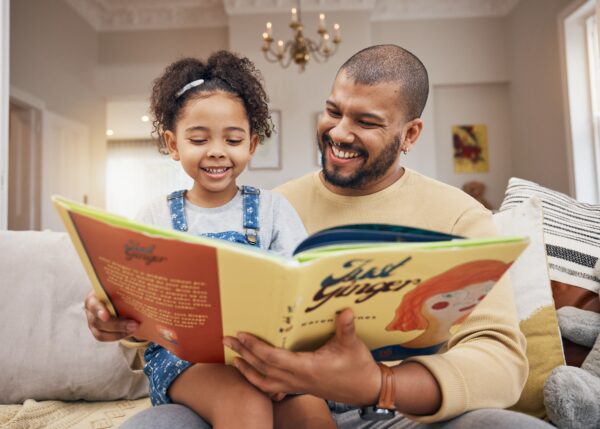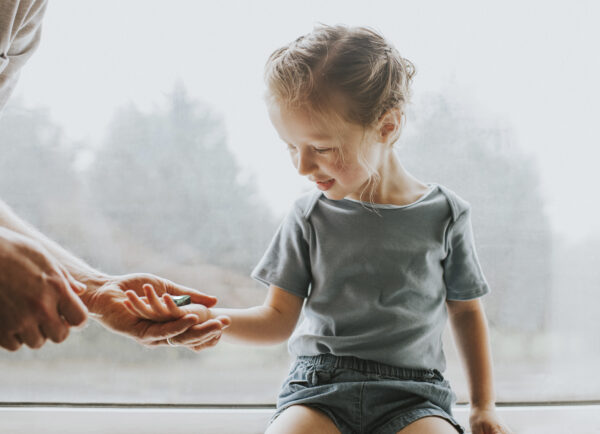Did you know there are some simple and practical strategies that you can add into your daily routine at home to help your child improve their listening and speech abilities?
Research shows that children learn language best when they are allowed to lead a conversation and communicate about topics that interest them.1 In practice, this means giving your child the opportunity to take that first turn, so that you have something to respond to.
This is called Observe, Wait and Listen, or the “OWL” strategy, which the Canadian not-for-profit Hanen Centre recommends for parents to use with their children to support language development.
Hanen programs are evidence-based parent training programs designed to help children and families achieve the best possible social, language and literacy skills—especially for those children at risk of language delays. You can find more at Hanen.org
So, how do you put OWL into practice? Here’s an example:
OWL
O = Observe your child
Observe body language, the way your child moves, their gestures, the actions they perform and their facial expressions.
W = Wait for your child
Wait to see what your child is interested in. Stop talking and instead, tune into your child. Waiting can be the most difficult step in this fast-paced world. If it helps, count to 10 and wait for your child’s response.
L = Listen to your child
Listen to the words and sounds your child is making. Don’t interrupt your child, even if you know what they are saying—just listen.
You can use the OWL strategy to guide you when you’re talking with your child. When you do this, you will find yourself tuning in to your child and talking about their interests.
How to use OWL in daily life
Consider this situation: you are getting your child ready for the bath23 and they are pointing to something across the room. You could either continue to put them in the bath, or you could use the OWL and talking strategies. Here’s how you might use the OWL and talking strategies together.
Your child: Points to something across the room.
You: Observe and follow your child’s point to see they are pointing at a bath toy on the floor.
You: Talk to them about what they are pointing to. For example: “Oh your bath duck! Your duck is on the floor, uh-oh! Come on duck, time for a bath.”
You: Wait by leaving a silence and looking at your child expectantly.
Your child: Says “wa wa.”
You: Listen to what your child says and guess that they are saying “quack quack.”
You: Talk to them about what they have said to you, for example, “Yes, the duck says quack, quack. Come on duck. Quack, quack, quack. In the bath.”
The OWL strategy will help you follow your child’s lead so that they’ll be more likely to stay in the interaction with you and get the practice and feedback they need to build communication skills.
Listen, learn and talk with your child. Click to download the free guide.
- Dickinson, David K., Griffith, Julie A., Golinkoff, Roberta Michnick, Hirsh-Pasek, Kathy, How Reading Books Fosters Language Development around the World, Child Development Research, 2012, 602807, 15 pages, 2012. https://doi.org/10.1155/2012/602807
- The Cochlear Baha 7 Sound Processor, with battery compartment excluded, is dust and water resistant to level IP68 of the International Standard IEC60529. Refer to the relevant user guide for more information. Tested by the RISE Research Institutes of Sweden AB.
- Based on the Baha 6 MAX Sound Processor, using the same technology as Baha 7 Sound Processor

